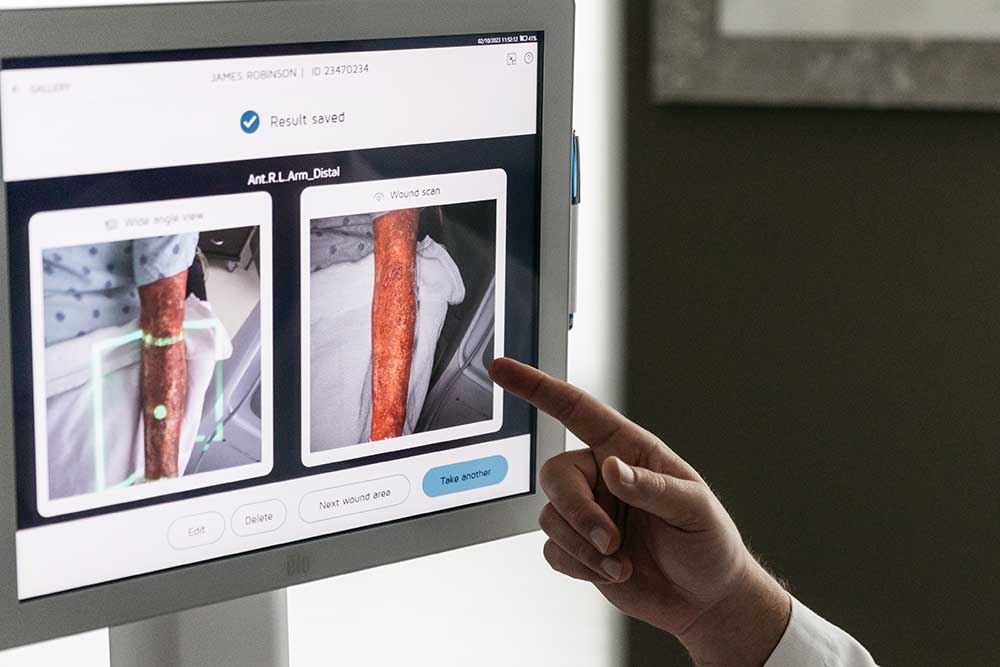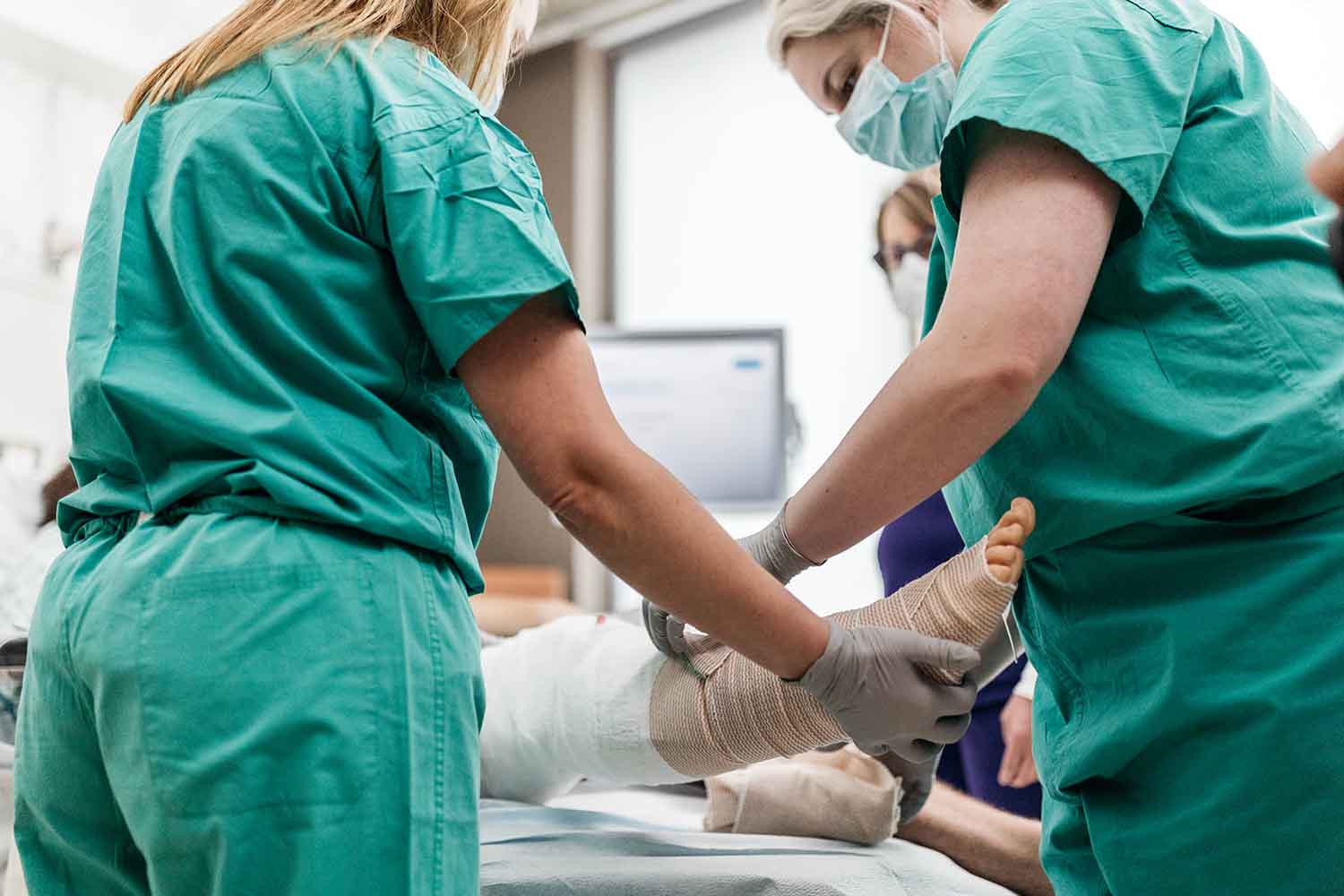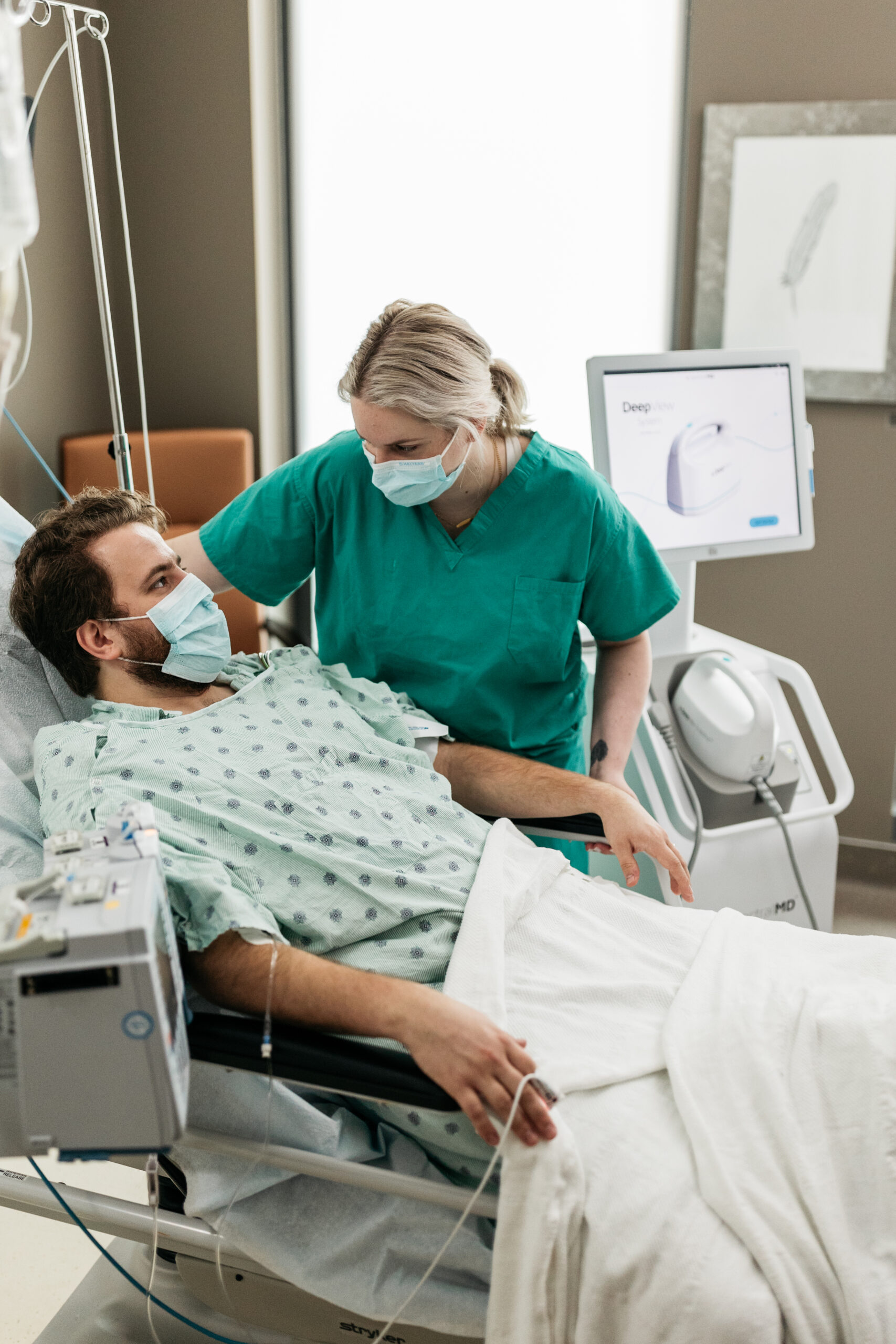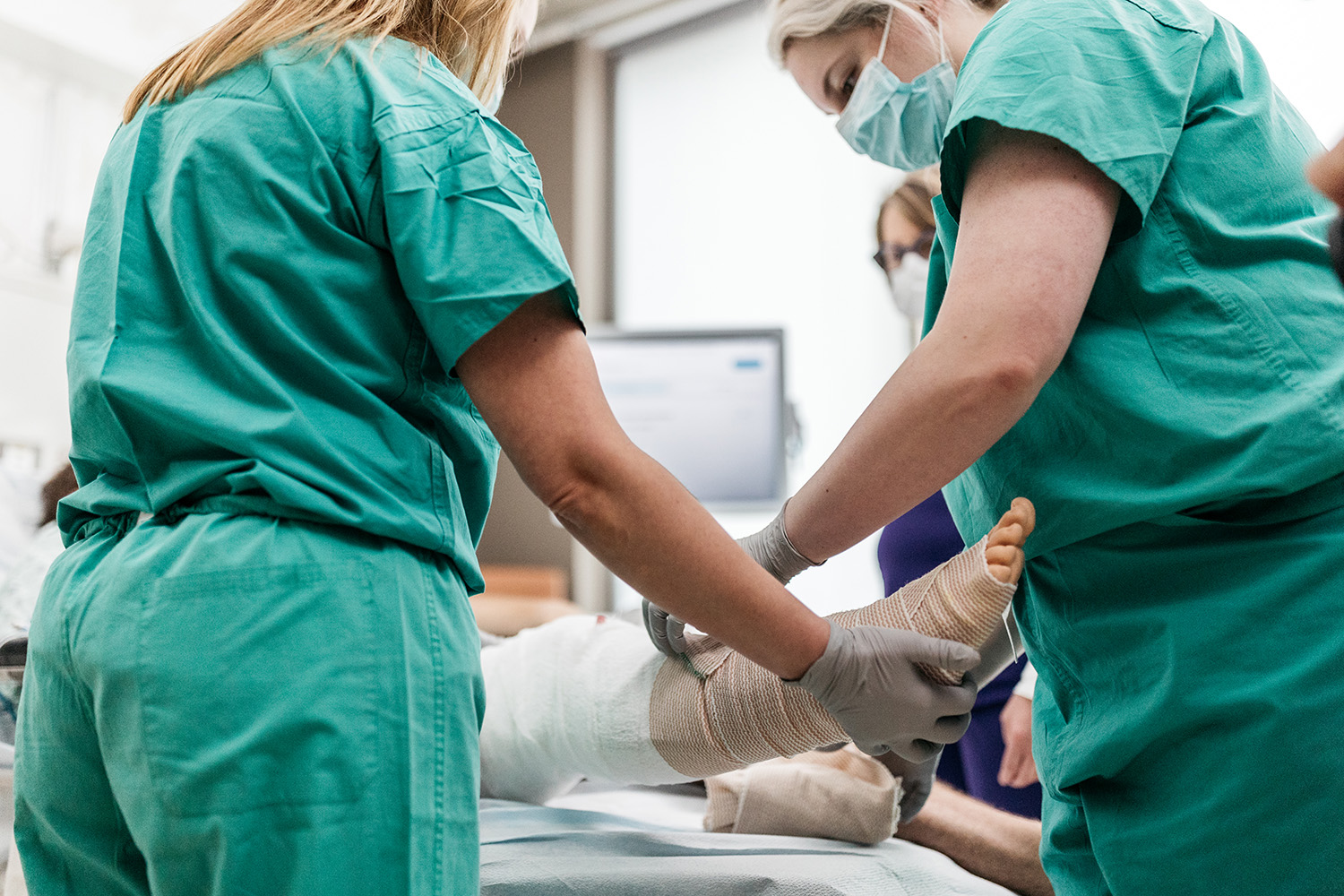Clinical Decision Tools in Healthcare
Clinical decision tools play a crucial role in healthcare by enhancing patient care and supporting clinicians in making accurate, timely decisions. These tools utilize advanced algorithms and data analytics to assist in diagnosing and treating complex conditions like burns, wounds, and diabetic foot ulcers. By integrating patient data with evidence-based guidelines, clinical decision support systems provide personalized recommendations that improve outcomes. They help clinicians identify the best treatment options, anticipate complications, and streamline workflows. In treating severe injuries, quick and precise decision-making is vital. Utilizing these tools ensures that care is both effective and efficient, ultimately leading to better patient outcomes and improved healthcare delivery.
How Clinical Decision Support Tools Aid in Burn Management
Clinical decision support tools significantly enhance burn management by guiding treatment protocols and improving patient outcomes. These systems integrate with electronic health records (EHRs) to provide real-time, evidence-based recommendations tailored to each patient. For instance, clinical decision support tools can assess burn severity, suggest appropriate debridement techniques, and recommend fluid resuscitation protocols based on the patient’s specific needs. By analyzing data such as wound characteristics and patient history, these tools offer precise and timely guidance, ensuring adherence to best practices. According to a study published in Burns, the use of decision support systems can reduce diagnostic errors by up to 30% in complex burn cases1. Additionally, a study from Journal of Burn Care & Research reported that integrating these tools into clinical practice improved treatment protocol adherence by 25%, leading to more consistent and effective patient care2.
Clinical decision support systems alert clinicians to potential complications, such as infections, and suggest preventive measures. They also streamline documentation and follow-up care, making it easier to track patient progress and adjust treatment plans as needed. Integration with telemedicine platforms allows for remote consultations and continuous monitoring, further enhancing the care process.
Furthermore, the use of clinical decision support tools has been shown to enhance the timeliness of interventions. A report from the American Burn Association found that implementing these tools reduced the time to critical intervention by 20%, which is crucial for improving patient outcomes in severe burn cases3. Moreover, patient recovery times have improved with the use of these systems, with a noted 15% reduction in the average length of hospital stays for burn patients4.
Using these tools, clinicians can make informed decisions quickly, reducing the likelihood of errors and improving overall care quality. Consequently, CDSS enhances wound healing, reduces complications, and optimizes resource use, leading to better outcomes for patients with burns, wounds, and diabetic foot ulcers. By leveraging advanced analytics and clinical guidelines, these decision support systems are indispensable in modern burn management.
Technological Advances in Treating Burns
Innovations such as laser therapy, bioengineered skin grafts, and advanced wound dressings provide new avenues for effective treatment, and have significantly improved patient outcomes and streamlined clinical workflows. These technologies offer precise wound evaluation, reduce healing times, and enhance tissue regeneration. Additionally, clinical decision support tools integrate with these technologies to provide evidence-based recommendations tailored to each patient’s needs. For example, laser therapy devices can assess burn depth and guide debridement, while bioengineered grafts promote faster and more effective healing.
Telemedicine platforms enable remote monitoring and consultation, ensuring continuous support for patients and timely interventions by clinicians. Moreover, integrating clinical decision support systems with electronic health records (EHRs) facilitates real-time data analysis, alerting healthcare providers to potential complications and suggesting optimal treatment protocols. These tools improve accuracy in clinical decision-making and reduce the likelihood of errors.
Overall, leveraging these technological advances enhances the quality of burn care, optimizes resource utilization, and supports better patient outcomes. By staying updated on these innovations, clinicians can provide the most effective and advanced care to patients with burns, wounds, and diabetic foot ulcers.
More about Deepview
Learn more about our DeepView® technology
Request a Demo
Looking to learn more about DeepView® technology, or eager to see it in action?
Utilizing Clinical Decision Support Software for Wound Care
Enhancing treatment effectiveness and efficiency with clinical decision support software is an important practice in wound care. These tools integrate seamlessly into clinical practice, offering real-time analysis and evidence-based recommendations. By inputting patient information, the system provides tailored treatment protocols for burns, wounds, and diabetic foot ulcers. This technology improves health outcomes by enabling precise and timely interventions.
Clinical decision support systems analyze data from electronic health records, identifying patterns and potential complications. This proactive approach helps clinicians anticipate issues and adjust treatment plans accordingly. Moreover, these tools streamline documentation and workflow, allowing healthcare providers to focus more on patient care and less on administrative tasks. A study found that using a CDSS resulted in a significant reduction in pressure ulcer incidence, from 7% to 2%, in the units where it was implemented after 6 months5.
By offering alerts and reminders, the software ensures adherence to best practices and guidelines, reducing the likelihood of errors. Integration with telemedicine platforms facilitates remote monitoring and consultations, providing continuous support for patients. This comprehensive approach to wound care enhances both immediate and long-term outcomes. Two surveys found that 46-83% of nurses reported seeking advice from peers such as nursing colleagues to inform their wound care decision-making6. Clinical Decision Support Tools make this second opinion a normal part of the diagnosis process.
Incorporating clinical decision support tools into everyday practice empowers clinicians to deliver high-quality, efficient care, improving overall patient health. By leveraging advanced technology, healthcare providers can stay at the forefront of wound care, ensuring optimal treatment strategies and better patient outcomes.
Integration of CDSS with Wound Care Protocols
Clinical decision support software helps incorporate patient information from electronic health records to provide real-time, evidence-based recommendations. The system analyzes data, identifies potential complications, and suggests appropriate interventions tailored to individual patient needs.
Integration with clinical practice ensures that best practices and guidelines are followed, reducing the likelihood of errors. The software provides alerts and reminders for critical steps in wound care, ensuring timely and accurate actions. This approach improves patient health outcomes by supporting clinicians in making informed decisions.
Moreover, these tools facilitate streamlined documentation, saving time and allowing healthcare providers to focus more on patient care. The system’s ability to continuously update protocols based on the latest research ensures that clinicians always have access to the most current and effective treatment strategies. This integration ultimately enhances the overall quality of analyzing wound assessment guidelines and wound care practice.
Overcoming Barriers to Adoption in Healthcare Settings
Overcoming barriers to adopting clinical decision support tools in healthcare settings requires a multifaceted approach. Clinicians need comprehensive training to integrate these tools seamlessly into their practice. Providing clear and concise information about the benefits of these systems can enhance their acceptance.
- Invest in Training: Offer hands-on training sessions to familiarize healthcare providers with the tool’s functionalities and advantages.
- Streamline Integration: Ensure that the clinical decision support system integrates smoothly with existing electronic health records to minimize disruption.
- Address Concerns: Actively engage with clinicians to address concerns about workflow changes and potential impacts on patient care.
- Demonstrate Value: Share evidence from studies and real-world applications showing improved patient outcomes and enhanced clinical efficiency.
By focusing on these strategies, healthcare settings can effectively overcome resistance and enhance the adoption of decision support tools. This will ultimately lead to better health outcomes, streamlined practices, and more informed clinical decision-making.
Ensuring Compliance and Accuracy in Clinical Decision Systems
Ensuring compliance and accuracy in clinical decision systems is critical for effective patient care. These systems must integrate seamlessly with clinical practice, providing reliable and up-to-date information. Clinicians should regularly validate and update these tools to maintain accuracy.
- Regular Updates: Keep the clinical decision support system updated with the latest medical research and guidelines.
- Validation Processes: Implement rigorous validation protocols to ensure the system’s recommendations are accurate and relevant.
- User Training: Provide ongoing training for healthcare providers to maximize the system’s potential and ensure proper usage.
- Feedback Mechanisms: Establish channels for clinicians to provide feedback on the system’s performance and suggest improvements.
By adhering to these strategies, healthcare providers can ensure that their clinical decision systems deliver accurate and compliant recommendations. This will enhance patient outcomes, streamline clinical practices, and support informed decision-making in treating burns, wounds, and diabetic foot ulcers.

More about Deepview
Learn more about our DeepView® technology
Request a Demo
Looking to learn more about DeepView® technology, or eager to see it in action?
The Future of Clinical Decision Tools in Treating Complex Health Issues
The future of clinical decision tools in treating complex health issues looks promising, offering significant advancements in patient care. These tools will integrate more seamlessly with electronic health records, providing real-time, evidence-based information to support clinical decisions. Emerging technologies, such as artificial intelligence and machine learning, will enhance the accuracy and personalization of treatment protocols. Clinicians will benefit from predictive analytics that anticipate complications and suggest preventive measures.
In practice, these advancements will streamline workflows, allowing healthcare providers to focus more on patient care and less on administrative tasks. For instance, tools that analyze large datasets will identify patterns and optimize treatment plans for burns, wounds, and diabetic foot care management. As these systems evolve, they will offer more precise, tailored recommendations, improving patient outcomes and overall health management.
By staying updated on these developments, clinicians can leverage cutting-edge tools to enhance their practice and provide the highest standard of care. Integrating these advanced systems will be crucial in addressing the complexities of modern healthcare.
References:
- Simons, M., King, S., & Edgar, D. (2003b, September 1). Occupational therapy and physiotherapy for the patient with Burns: Principles and management guidelines. OUP Academic. https://academic.oup.com/jbcr/article-abstract/24/5/323/4733779?redirectedFrom=fulltext
- Wong She, R. B., & Gibran, N. S. (2022a, September 1). Burn wound bed management. OUP Academic. https://academic.oup.com/jbcr/article/44/Supplement_1/S13/6681407
- Gerrek, M. L., Lambrix, M. A., Goff, A. D., & Yowler, C. J. (2022, March 23). 767 medical decision making in the burn unit: A qualitative study. OUP Academic. https://academic.oup.com/jbcr/article/43/Supplement_1/S190/6552702
- Serio-Melvin, M. L., Salinas, J., Chung, K. K., Collins, C., Graybill, J. C., Harrington, D. T., Herndon, D. N., Greenhalgh, D. G., Kramer, G. C., Lintner, A., Mosier, M. J., Nagpal, A., & Cancio, L. C. (2017, January 1). Burn shock and resuscitation: Proceedings of a symposium conducted at the meeting of the American Burn Association, Chicago, IL, 21 April 2015. OUP Academic. https://academic.oup.com/jbcr/article-abstract/38/1/e423/4568958
- Araujo, S. M., Sousa, P., & Dutra, I. (2020, October 16). Clinical Decision Support Systems for pressure ulcer management: Systematic Review. JMIR medical informatics. https://www.ncbi.nlm.nih.gov/pmc/articles/PMC7600011/
- Vains, A. S., & Finlayson, K. (2022, June 1). Cambridge media journals – how generalist nurses inform their clinical decision-making in Wound Management: A scoping review. Wound Practice and Research. https://journals.cambridgemedia.com.au/wpr/volume-30-number-2/how-generalist-nurses-inform-their-clinical-decisio
